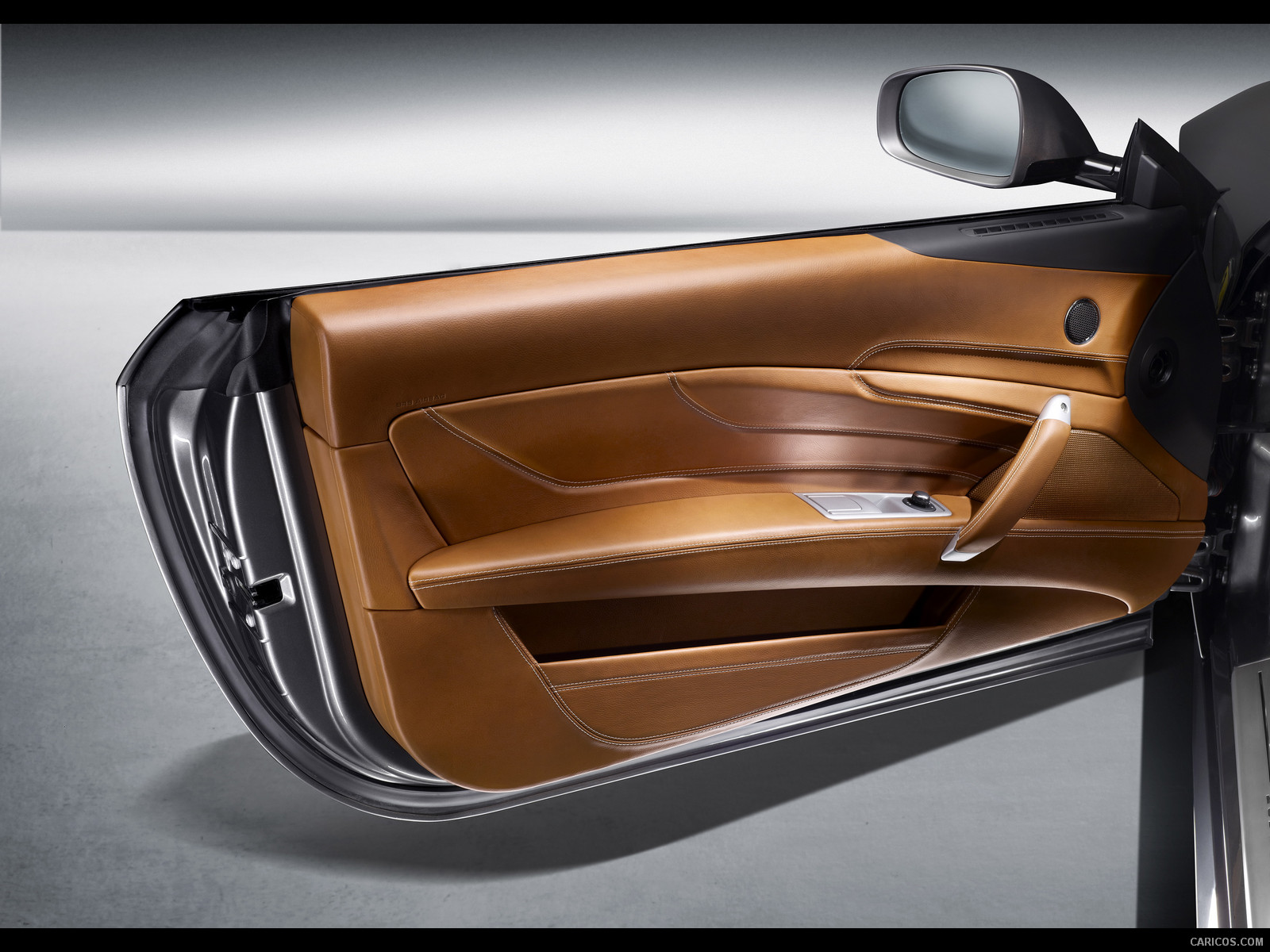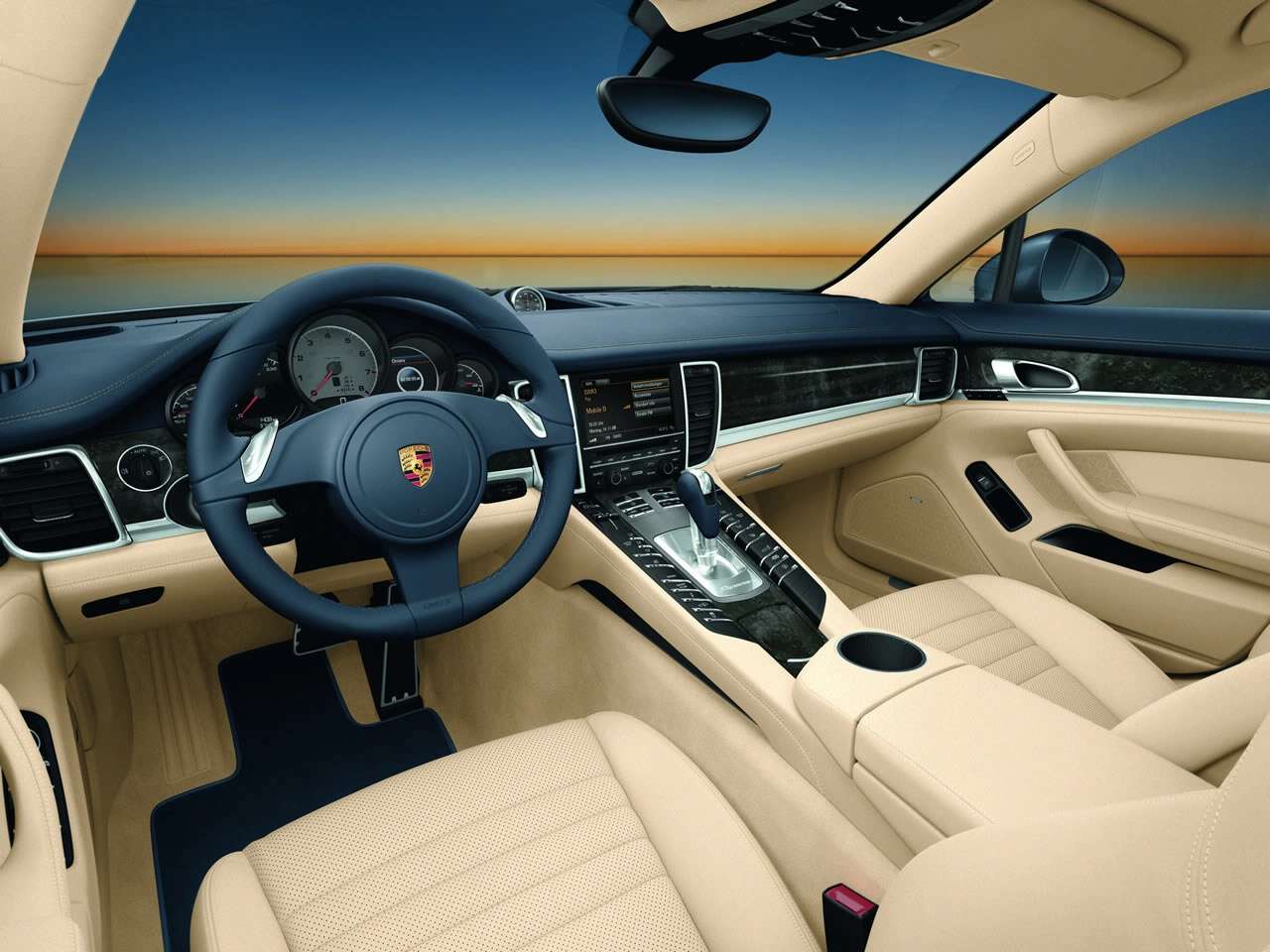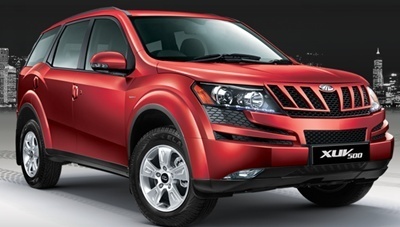Ferrari FF

An exhaustive introduction to the Ferrari FF is likely to be superfluous to even the most casual Ferrari fan so we’ll only pause for a brief recap before getting to the nitty gritty of our first UK drive.
Launched around a year ago, the shooting brake-styled four-seater offered buyers a first: a full-size Grand Tourer with a 651bhp V12 engine and, somewhat contentiously, four-wheel drive.
The colossal, naturally aspirated unit is a direct-injection descendant of the V12 that featured in the Enzo, but Ferrari’s first production all-wheel drive system is an altogether more novel solution. When required by the front wheels, power is fed directly from the crank into a second, smaller gearbox located beneath the engine.
This transmission only has two forward gears, and because its ratios cannot replicate the seven speeds of the main gearbox, the resulting wheel speed mismatch is managed by two continually slipping clutches. The main benefit of the system is that it offers all-wheel-drive traction (you’ll doubtless have seen video footage of the FF ploughing through snow) without the normal weight penalty.
Ferrari claims its Power Transfer Unit adds just 45kg to the model’s kerb weight.
The innovative packaging is not limited to underneath, either. As well as four perfectly chiseled sports seats the FF provides 450 litres of boot space – enough to put some family hatchbacks to shame.
The only thing it consumes more enthusiastically than people and luggage is fuel and air: up to 80 per cent of the engine’s 504lb ft of torque is available from 1750rpm – use all 8000rpm and it will reach 62mph in 3.7 seconds, splinter 124mph in 11sec, and top out at a claimed 209mph.


What is it like?
Most initial assessment of the FF was at least partially concerned with the question of identity; could this generously proportioned four-wheel-drive estate car really be considered worthy of the emblem plastered on its flanks?
Let’s tidy that one up first: yes, it most certainly can. It is not perfect or peerless like the 458, but its strengths are mighty, its demerits negligible and, crucially, it practically croons with character.
First, the strengths. There are many initial impressions to be left with on encountering the FF – its distinctive, almost strained appearance; its parking space-busting size; the utter perfection of its driving position – but all of these will be swept away by the chattering cough and percussive throb of its ignition.
The noise is liable to leave a mark on you every bit as real as the thumbprint you will have just deposited on its steering wheel-mounted starter button. Tickle the throttle and a sinful guttural giggle accompanies the first whoosh of a power delivery apparently oblivious to the FF’s accompanying 1880kg millstone.
As speed rises, the steering, light at slow speeds, inherits weight and clarity without telegraphing the technical endeavour required to get it there. It has obviously been made quick to disguise the FF’s mass and encourage deft changes of direction, but this has been achieved without the artificiality perceptible in the Mercedes SLS’s sometimes-hyperactive nose.
Together with a chassis built to chew through the quarreling computations of body control, grip limitation and suspension loading, and return nonchalant agility, the FF feels not just compliant in a user-friendly GT way, but malleable and accommodating.
All this makes car stupefyingly easy to drive up to seven tenths of its limit – as much you can sanely expect to achieve on the road – and, as such, keeps all the power firmly hot-wired to the rear axle, where it should be. In the dry, serious exuberance is required on roundabout-sized bends to press the front wheels into obvious service. Even then, this will only register as a cursory but perceptible tug from the nose as it sources sufficient traction to help trim the angle being created at the back.
Super-fast but non-threatening, svelte but seats four (it really does, and in some comfort) – where are the faults among the fanfare? Predictably, they languish much further back in the model’s practically minded repertoire. Chief among them is the ride quality, which, away from the continent, downshifts from praiseworthy into merely respectable territory.
Even with the car’s adaptive Manettino dial turned to its comfort setting, the FF is certainly not a sponge for soaking up the inconsistencies of English tarmac. More often than not it feels like a sponge being dragged hard and fast across a boxer’s mid-fight features; there’s a slim, pliable buffer beneath your hands for sure, but equally there’s no mistaking every significant cut and bruise.
Nevertheless, the result is not jarring or brittle, nor is there any hint of dislocation from the road surface. For many if not most the FF will feel coiled like a Ferrari should be, but it’s possible that for some of its money-no-object clientele the prospect of steering the family towards a distant country retreat would be better accomplished in something with a less-aggressive backbone.
The same buyers might also frown with quiet frustration at the normally exemplary gearbox’s occasional hesitancy at high street speeds. Left to deal with very light throttle loads in its auto mode, the F1-DCT occasionally misjudges the shift between first and second (and back again) as it juggles the engine’s colossal latent energy with your requirement to trickle between traffic lights.
Should I buy one?
We’d be jealous if you did. The FF’s massive price tag (£275,827 with options in this case) puts it in the upper echelons of motoring excess, well beyond the normal means of anyone familiar with personal loans and PAYE paychecks.
Overall it well deserves its place in such rarefied air; the model is not fanboy poster fodder, but it’s a hypercar carrier of four unrivaled in ethos or execution.
Whether the theme of that particular concept appeals to you personally is another matter. For some the FF may be too big, too heavy, and with its four-wheel-drive safety catch, even too conservative to offer a proper Ferrari fix.
Others may find it too noisy and punishingly raw for high-end grand touring. But for those in-between, those willing to compromise slightly at either end and also not yield to inclement weather, the FF could be the compelling purchase of a lifetime.
Ferrari FF
Price: £227,077; 0-62mph: 3.7sec; Top speed: 208mph; Engine: V12, 6262cc, petrol; Power: 651bhp at 8000rpm; Torque: 504lb ft at 6000rpm;Economy: 18.3mpg; CO2: 360g/km; Transmission: 7-spd dual clutch transmission (rear axle) + 2spd (front axle)
Ferrari FF
Price: £227,077; 0-62mph: 3.7sec; Top speed: 208mph; Engine: V12, 6262cc, petrol; Power: 651bhp at 8000rpm; Torque: 504lb ft at 6000rpm;Economy: 18.3mpg; CO2: 360g/km; Transmission: 7-spd dual clutch transmission (rear axle) + 2spd (front axle)
Images





















